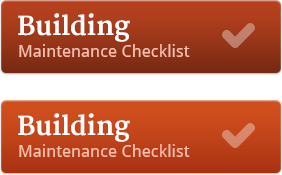 A well maintained landscape that surrounds your office complex, apartment buildings, condominiums, or townhomes leaves an essential first impression to your clients or tenants. For property and business owners this means that the more appealing the landscape is the more inviting it is for tenants to walk into your premises.
A well maintained landscape that surrounds your office complex, apartment buildings, condominiums, or townhomes leaves an essential first impression to your clients or tenants. For property and business owners this means that the more appealing the landscape is the more inviting it is for tenants to walk into your premises.
Essentially, no matter how simple your property landscaping is it will still need trimming, fertilizing, watering, clean up and at times possible disease prevention. The process takes a lot of time and effort and for people who are always on the go it is best for them to hire professional landscape maintenance personnel that can do the work weekly or according to your yard’s needs. The difference between a good landscape and a bad one is marked by how much time was invested on the project and was it tackled properly. With all the weeding, mowing and mulching going on one would beg the question: “Did I do the task in the right manner?”
So, we at Tru-Serve Building Maintenance devised a monthly Landscape Maintenance Checklist for you that can be done throughout the different seasons:
January To April Checklist
January
- Clean up any debris left behind by the winter storms
February
- Prune trees to raise undercarriage. Plants and shrubs will need to be pruned for rejuvenation.
- Based on soil test, apply lime to the lawn.
- During spring and summer months apply dormant oil to shrubs to reduce insect damage.
- Ornamental grass should be trimmed to avoid them looking messy and unkempt.
- Form and finalize your plans for a Spring Landscaping Project.
March
- Begin your spring cleanup chores if the weather breaks early.
April
- If turf is dry opt for a dethatch/verti-cut lawn.
- Remove all leaves, debris and leaves as part of your spring cleanup completion.
- Check if the window wells, catch basins and other drainages are clean.
- Before Forsythias finishes its bloom you should apply the first round of turf fertilizer that has crabgrass pre-emergent. Do not put any crabgrass pre-emergent on areas where the lawn is thin.
- Mow lawn as required by conditions. Try not to remove more than 1/3 of the grass plant a time.
- Fertilize spring bulbs late in the bloom cycle. If you have tulips fertilize them while blooming and after.
- Reestablish and cultivate bed edges. Apply pre-emergent to beds.
- If the soil is not overly wet you can transfer, plant or divide perennials.
- Plant spring pansies for color.
- Ornamental planting beds can be fertilized for slow release of fertilizers. Ground covers should also be fertilized as well.
- Start monitoring the grounds for pests.
- On the first Sunday of April reset your automatic timers on outdoor lighting. Check the bulbs and replace them if necessary.
- On the second week of April you can turn on your irrigation system. You should also check if all zones and/or heads are working properly.
- Hardscapes should be checked for damage from the winter weather. Make repairs as necessary.
May To August Checklist
May
- Mowing should be done as frequently as necessary.
- Weed control can be done during cooler temperatures when weeds grow actively. This should be a perfect time to spray selected areas with herbicide.
- Over-seed the lawn.
- Apply the second batch of fertilizer on the last week of May.
- Prepare annual flower beds and summer annuals. Weed the beds as necessary.
- Hedging plants should be sheared.
- Begin watering the landscape more before temperatures rise. If the greens goes dormant it will much more water to restore it rather than the ¼ that it takes to keep it green.
June
- Mowing should still be continued.
- If temperatures reach mid 80s stop using selective herbicides.
- Fertilize your summer annuals.
- Flower and ornamental beds should be mulch to avoid dryness.
- Perennials should be pinched back, dead headed and staked.
- Maintenance pruning should be done for the ornamental plants.
- Form and finalize your plans for a Fall Landscaping Project.
July
- Skip mowing schedules only if the lawn is either not growing or is excessively dried out.
- Third batch of fertilizer application on the first week of July.
- Perennials should be fertilized for the second and last time for the season.
- Perennials and ornamental beds should periodically be watered in a long, deep, slow watering system for the water to soak deep into the earth.
August
- If there is drought, stop mowing the lawn otherwise continue doing so.
- Prune plants as needed.
- Perennials and ornamentals should still be watered.
- New grass seed should be installed after the third week.
- Form and finalize your plans for next year’s Landscaping Project.
September To December Checklist
September
- The fourth batch of fertilizer should be applied on the first week.
- Selective herbicides can be applied again to the turf for unwanted weeds.
- Install fall annual color by mid-September
- Prune and shear plants for the last time this season.
October
- Continue with the regular mowing schedule.
- Start your fall clean up by removing all leaf, plant debris and diseased plant parts.
- Perennials and other plants that need insulation during winter need new mulch to be installed.
- Water landscapes plants well until the ground is frozen.
- Dig and store tender perennials, tubers and summer bulbs.
- Divide perennials and reduce unwanted plants in bed.
- Prune back roses. Cover root flares or trunks with mulch.
- Drain pipes and blow out irrigation systems.
- Spring flowering bulbs can be installed by the end of the month.
- Spray anti-desiccant on plants.
- Fertilize trees and shrubs by using balanced fertilizers.
- Turn water off to exterior features by the second week.
- Inspect outdoor lights, replace and repair if necessary.
- On the last Sunday of October Daylight Saving Time ends so automatic timers should be reset.
- If you have a pond, it needs to be cleaned out.
November
- You can continue to cut the grass until it stops growing.
- Start installing winter burlap screening to protect plants from the winds and temperatures below 50°F.
- The fifth and last application of fertilizer should be done by the second week of the month.
- Cut down perennial beds after several killing frosts.
- Clear up any leaves left behind in the landscape.
- Check the catch basins, drainages and window wells.
- Soil pH level should be checked.
- Hoses and other gardening equipments should be stored and put away properly.
December
- Clean remaining leaves in the landscape
- Remove fall annual flowers after they have declined.
For more information about lawn care services you can visit at www.tru-serve.com.



